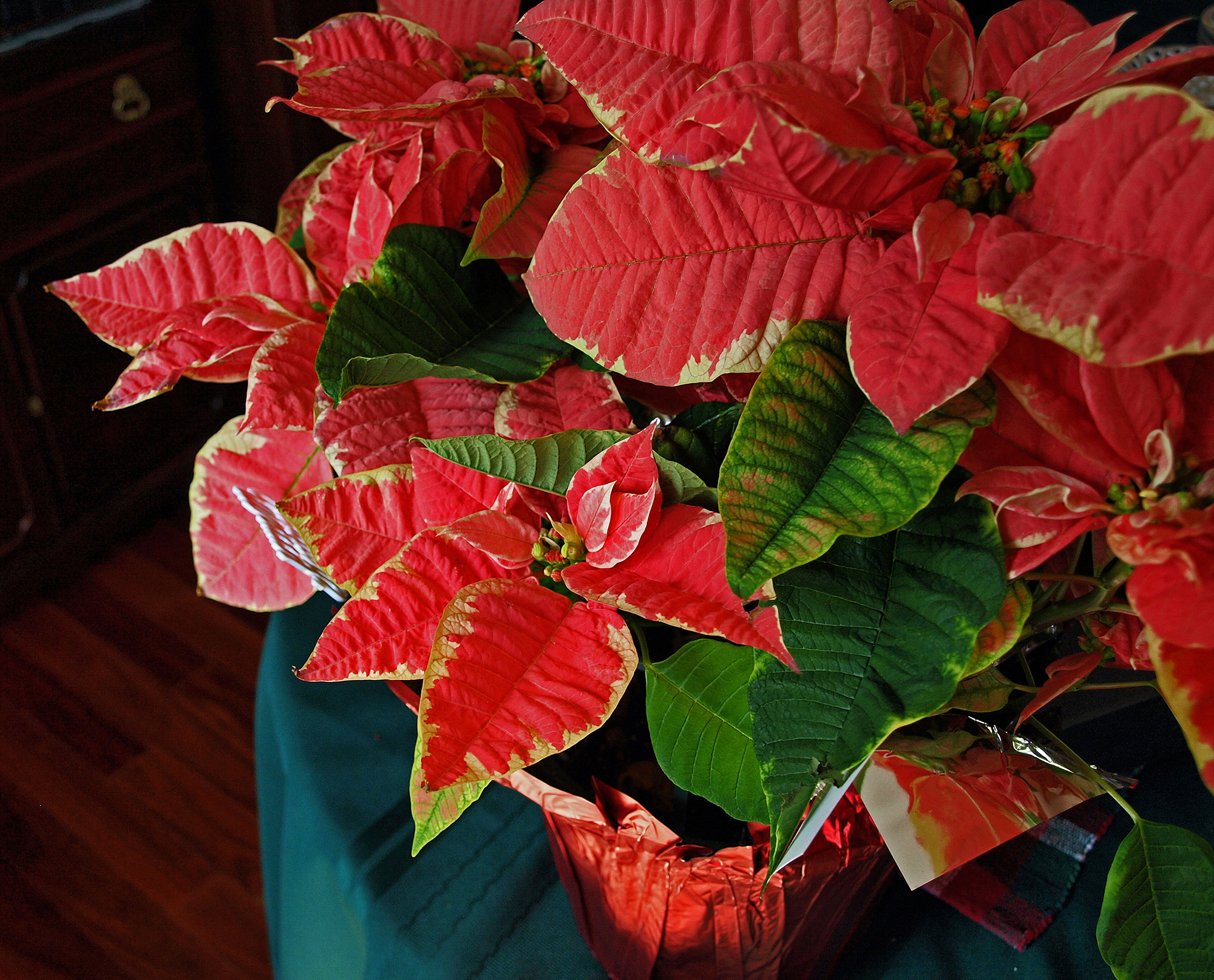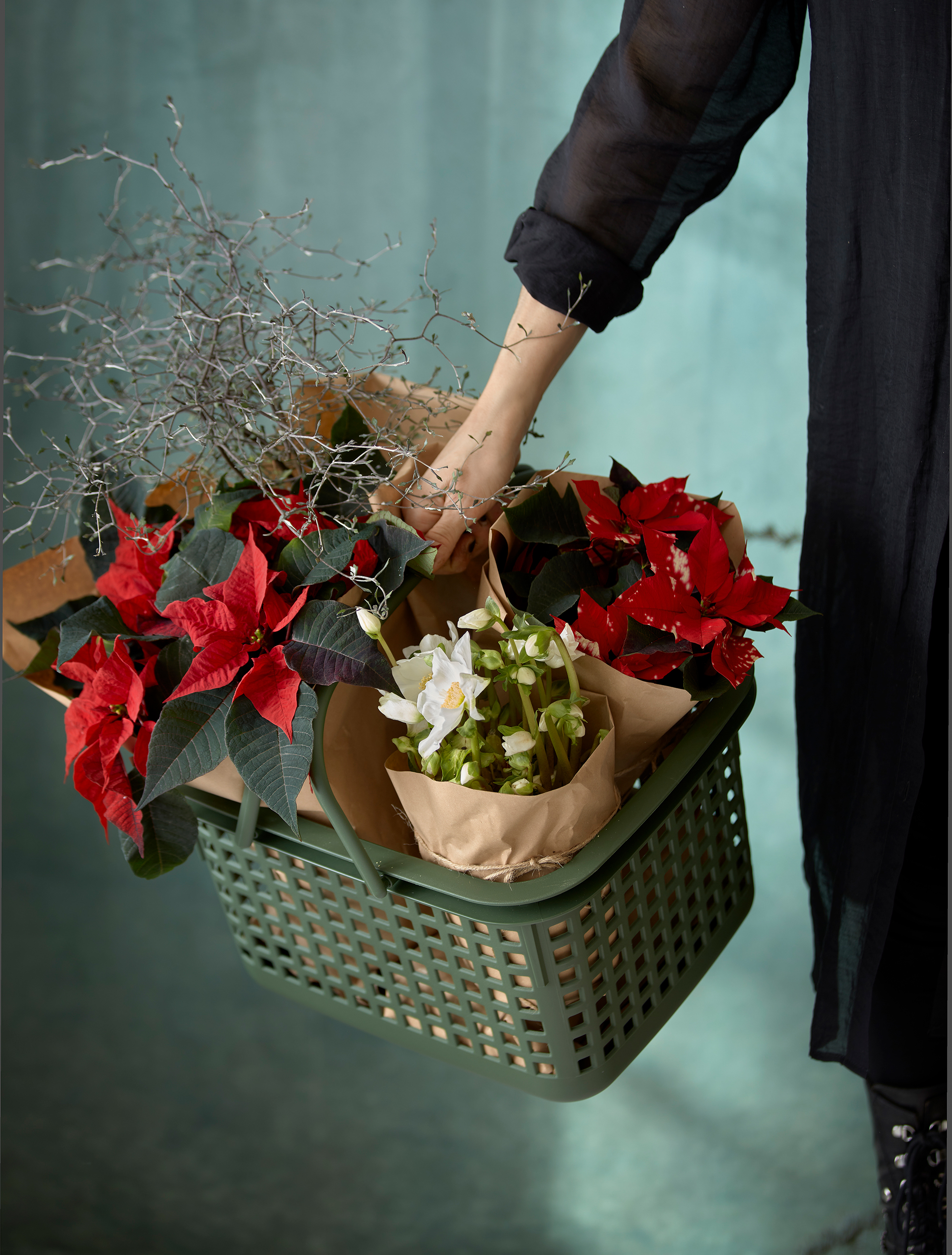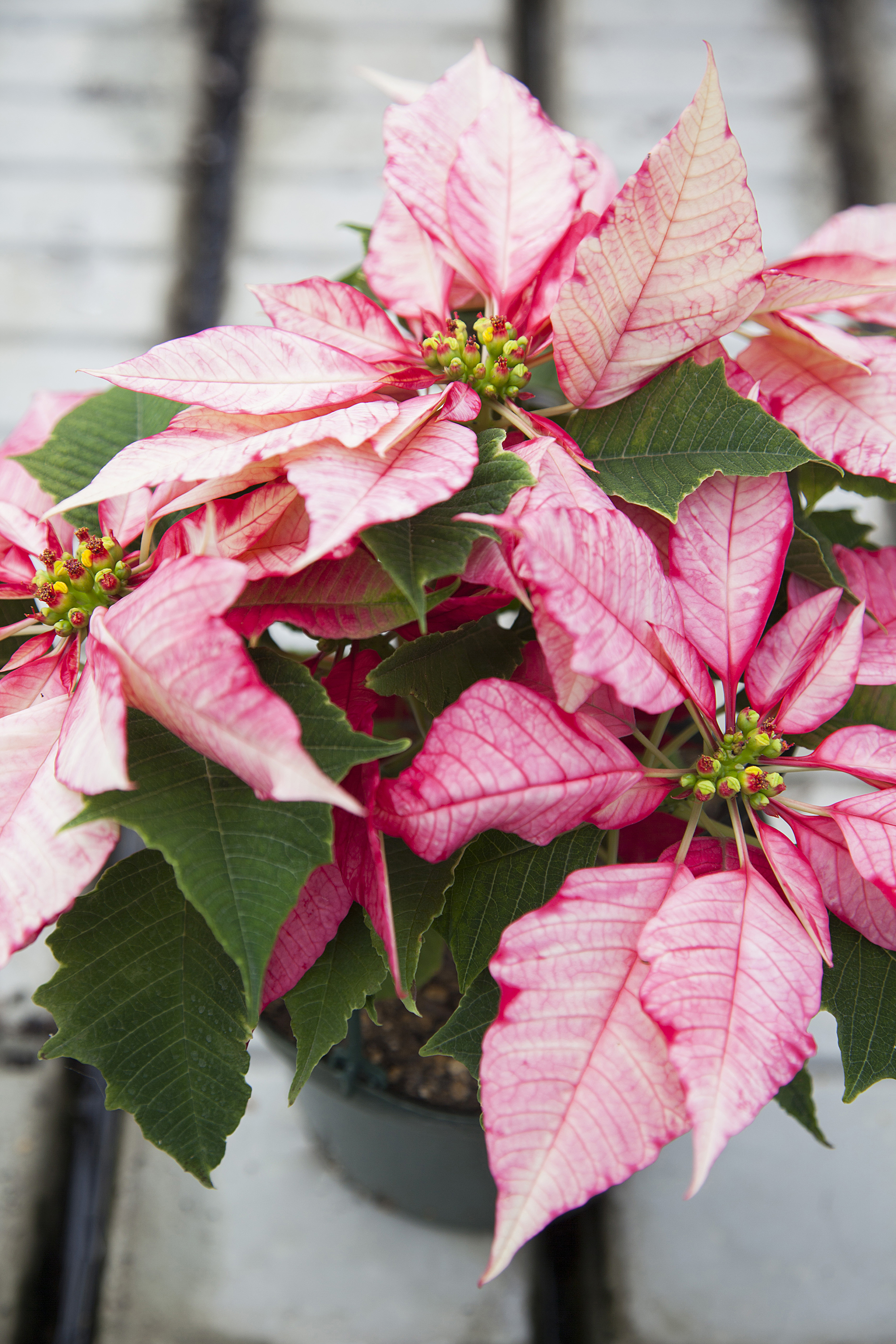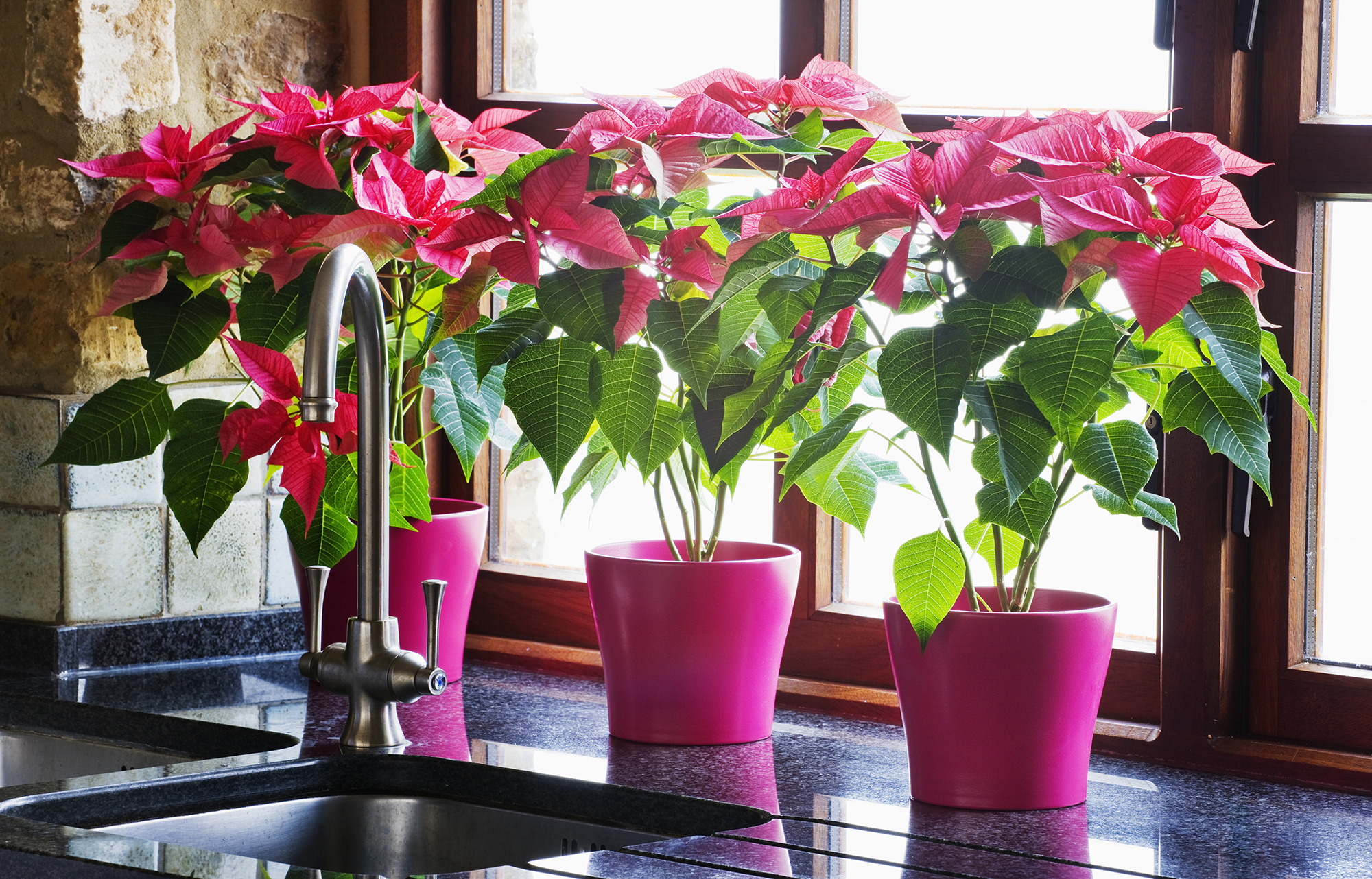How often should I water a poinsettia?
Leaves dropping already? Get your festive foliage back on track with the right watering routine


Not for the first time, I've noticed the poinsettia I'm given by a neighbor every year has started to drop its leaves. And once again, I have to remind myself how often I should be watering my poinsettia.
The arrival of the cheery blooms of this potted Christmas plant signals the start of the holidays in our house, and I usually end up with two or three by mid-December.
The best poinsettias for Christmas include a range of leaf colors, and I like to mix it up a little with different combinations in various rooms of the house. I'm always careful to pick healthy-looking plants, with bright green leaves and colorful, sturdy stems, but still sometimes find that they can start to look a little unhappy after a couple of weeks of being subjected to indoor heating.
So, top of my list of questions on how to look after poinsettias, is how often should I be watering mine? The short answer is, I'm afraid, that it depends on all sorts of variables. Below, I go into detail on how to get it right.

Rachel Crow is Homes & Gardens' Gardening Editor and expert on all things houseplants, though she also writes about renovating and remodelling historic properties for us. 'I am pretty good with indoor plants,' says Rachel, 'but I have to remind myself about Christmas plants such as poinsettia which are often only in my home for a short stay.'
How often should I water a poinsettia?

Incorrect watering can be among the reasons why my poinsettias leaves turn yellow.
'Poinsettias should be watered when the plant’s soil is dry,' explain the experts at Bell Nursery, the largest grower of plants in the Mid-Atlantic, who move more than 1 million poinsettias through the holiday season.
'A great way to water it is to take the plant to the sink, remove the foil wrapping and add water to the soil,' they add.
'The foil wrapping can be replaced after the excess water has drained from the plant. The plant can also be placed in a saucer and the foil wrapping can be punctured at the bottom of the plant to allow drainage.'
How often you water a poinsettia will therefore depend on the dryness of the soil – which can be affected by environmental conditions, how warm or cold the house is, and where the plants are positioned – just like with many of my other winter houseplants.
'Unfortunately, there is no specific rule of thumb about when to water poinsettia: it depends on the temperature, sunlight and humidity conditions in your home. The best advice is to check the plant weekly to determine its needs. Poinsettias should be watered thoroughly when the soil is dry to the touch. Stick your finger about an inch down into the soil; if it feels dry, water; if you are not sure or it feels moist, check it again in a few days,' advises Karen Musgrave of New York-based Hicks Nurseries.
'The temptation is to give this plant plenty of water to allow it to thrive, but this really isn't necessary. If the soil is already damp, your poinsettia has plenty of water,' adds Venus Moore of Venus Gardening.

How much water does a poinsettia need?
So, how much water should I give my poinsettias when I do water them?
'Poinsettias like to be watered thoroughly, but then left to dry out some before they are watered again. In winter, when temperatures drop, you can reduce watering slightly as poinsettias naturally slow down their growth during this time. However, if you have the plant in a warm room, you should stick to the once-a-week schedule,' advises Lindsey Hyland of Urban Organic Yield.

Should you water poinsettias from the top or bottom?
'Ensure not to wet the leaves when you water, as this can cause problems like leaf spot. You should also check to make sure that the pot has good drainage. If there isn't enough drainage, the poinsettia may become overwatered and develop root rot,' advises Lindsey.
And just as important as how you water poinsettias is the temperature of the water you use when watering these tropical plants, it would appear.
'Use at least 70°F (20°C) warm water, because cold water is harmful to these plants. Also, spray the leaves with water regularly to keep an appropriate level of humidity,' advises Tatyana Zhuk, plant expert at NatureID App.
So, armed with all of this expert advice, I'm hoping that I manage to keep my poinsettias looking healthy and happy all through the holidays.
Sign up to the Homes & Gardens newsletter
Design expertise in your inbox – from inspiring decorating ideas and beautiful celebrity homes to practical gardening advice and shopping round-ups.
Rachel is senior content editor, and writes gardening content for homesandgardens.com, Homes & Gardens magazine, and its sister titles Period Living Magazine and Country Homes & Interiors. She has written for lifestyle magazines for many years, with a particular focus on gardening, historic houses and arts and crafts, but started out her journalism career in BBC radio, where she enjoyed reporting on and writing programme scripts for all manner of stories. Rachel then moved into regional lifestyle magazines, where the topics she wrote about, and people she interviewed, were as varied and eclectic as they were on radio. Always harboring a passion for homes and gardens, she jumped at the opportunity to work on The English Home and The English Garden magazines for a number of years, before joining the Period Living team.
-
 Orange and green is the bold color pairing quietly transforming homes in 2025 – here's 4 reasons why
Orange and green is the bold color pairing quietly transforming homes in 2025 – here's 4 reasons whyInterior designers are making the orange and green combination work wonders – this is how you can too
By Sophia Pouget de St Victor Published
-
 This Michelle-Pfeiffer-approved chair is made of a forebodingly unusual material, opening the debate: Is it a rustic stunner, or a danger to sitters?
This Michelle-Pfeiffer-approved chair is made of a forebodingly unusual material, opening the debate: Is it a rustic stunner, or a danger to sitters?The actress took to Instagram with a chair made of a controversially sharp material – and fans are unsure of how they feel about it
By Sophie Edwards Published